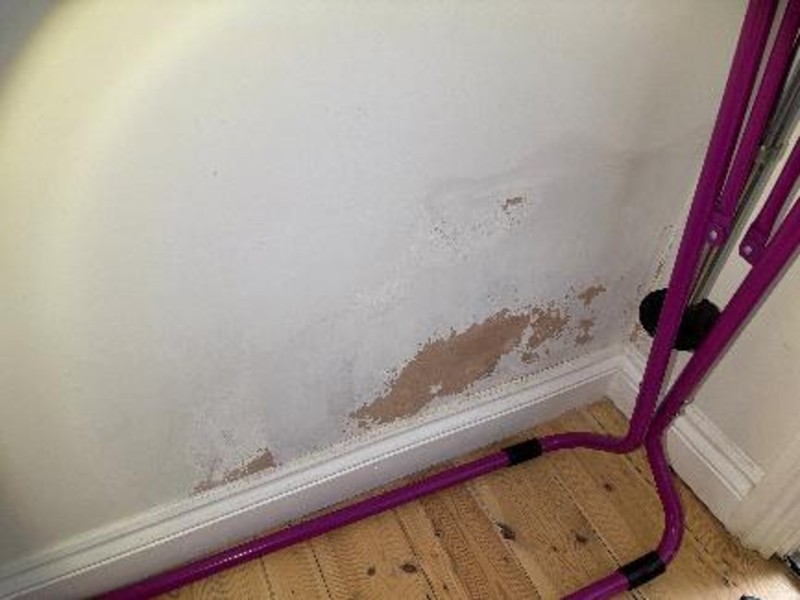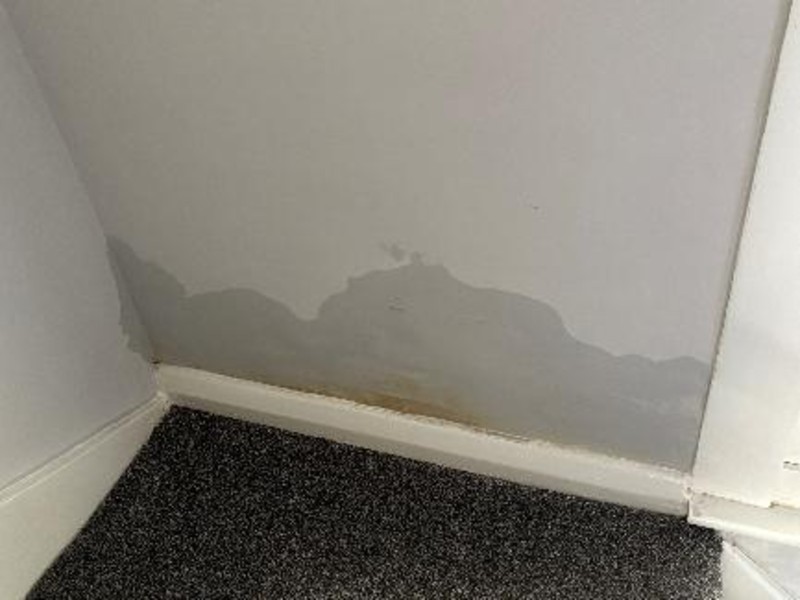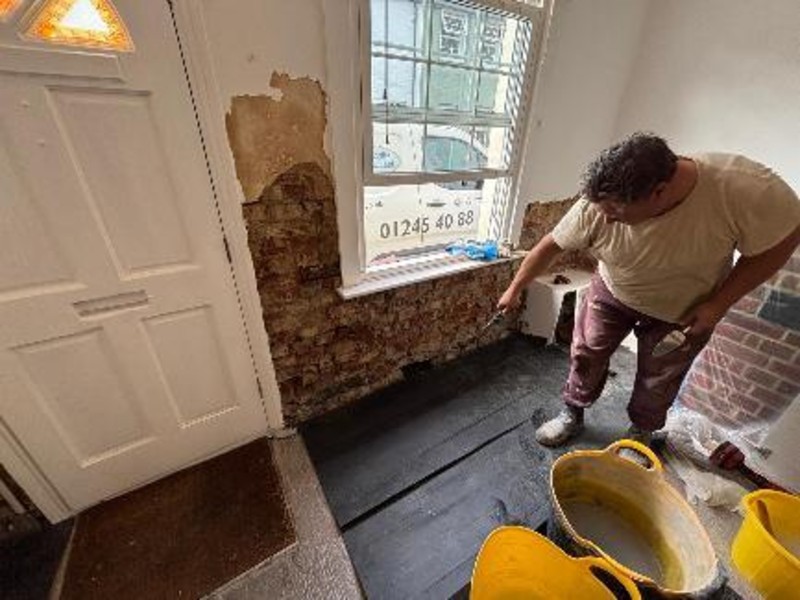Rising Damp
Unlike penetrating damp (caused by leaks or rainwater ingress) or condensation (moisture forming on surfaces due to humidity), rising damp originates from the ground. Bricks and mortar are porous materials, meaning they can absorb water. When the damp-proof course (DPC) – a barrier designed to prevent ground moisture from rising up through the walls – fails or is absent, groundwater containing dissolved salts can be drawn upwards through capillary action, much like water soaking up a sponge.

Another clear sign is damage to wall finishes. Paint may blister, flake or peel away, while wallpaper can become loose, stained or start to bubble as a result of the excess moisture. You may also notice powdery white deposits, known as efflorescence, forming on wall surfaces. These salts are left behind as water evaporates and are a strong indicator of rising damp.
Timber elements near the affected area, such as skirting boards and floorboards, can suffer too. Prolonged dampness leads to wood decay, causing these features to rot, crumble or feel spongy under pressure. In more severe cases, dark stains can develop on the lower parts of interior walls, signalling significant moisture penetration. It is also worth checking the exterior of your property, as white salt deposits on the lower sections of external walls may indicate the same underlying problem.

Most importantly, do not ignore the problem. Rising damp will not resolve itself and, if left untreated, can lead to significant structural damage and costly repairs. Professional intervention is necessary to address the underlying cause effectively and prevent further deterioration.
Another clear sign is damage to wall finishes. Paint may blister, flake or peel away, while wallpaper can become loose, stained or start to bubble as a result of the excess moisture. You may also notice powdery white deposits, known as efflorescence, forming on wall surfaces. These salts are left behind as water evaporates and are a strong indicator of rising damp.
Timber elements near the affected area, such as skirting boards and floorboards, can suffer too. Prolonged dampness leads to wood decay, causing these features to rot, crumble or feel spongy under pressure. In more severe cases, dark stains can develop on the lower parts of interior walls, signalling significant moisture penetration. It is also worth checking the exterior of your property, as white salt deposits on the lower sections of external walls may indicate the same underlying problem.
The first step involves a thorough inspection carried out by one of our qualified surveyors. They will accurately diagnose whether the problem is rising damp and identify any contributing factors that may be worsening the issue. This detailed assessment allows us to develop a clear understanding of the situation before recommending any treatment.
As part of the inspection, the surveyor will also examine the condition of your existing damp-proof course (if one is present) and check for any bridging problems. Bridging occurs when external ground levels or internal flooring sit higher than the damp-proof course, allowing moisture to bypass the barrier and rise into the walls.

Identifying these underlying causes is essential to preventing future problems. Once the cause is established, the surveyor will recommend the most appropriate treatment for your property. This often involves installing a new chemical damp-proof course, which forms a water-repellent barrier within the wall to stop moisture from rising. This solution is highly effective and designed to provide long-term protection.
Following diagnosis and treatment planning, our skilled technicians will carry out all necessary remedial work. This typically includes removing salt-contaminated plaster and applying a specialist render to control moisture, followed by a finishing plaster that leaves the walls ready for decoration within four to six weeks. These careful steps ensure that the affected area is fully treated and restored. Finally, choosing a reputable damp proofing company such as ours provides added peace of mind. Our work is often backed by guarantees, ensuring that you are protected against future issues and can have confidence in the quality and durability of the treatment provided.
Ignoring rising damp can lead to significant damage and a decrease in your property’s value. By being vigilant and acting promptly when you spot the signs, you can protect your home. Don’t let this silent intruder compromise the comfort and integrity of your property – address it head-on with the help of the experts.
